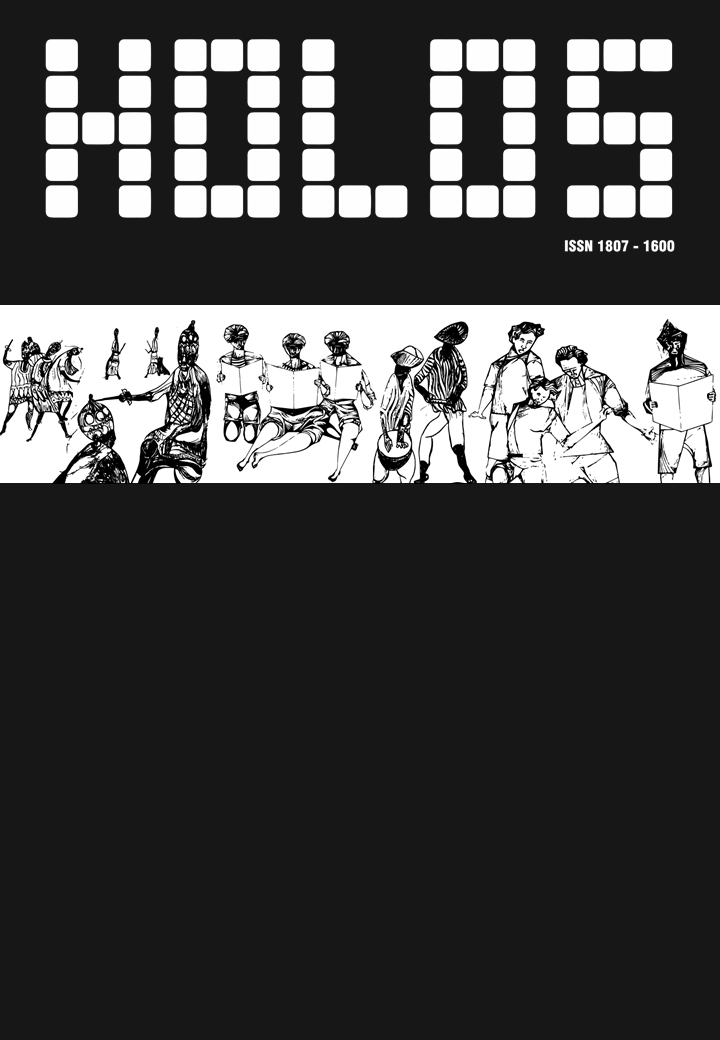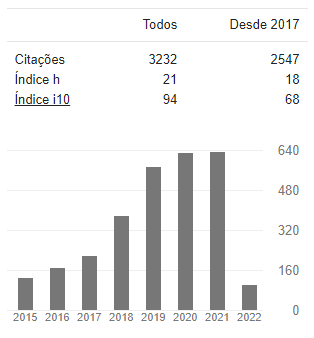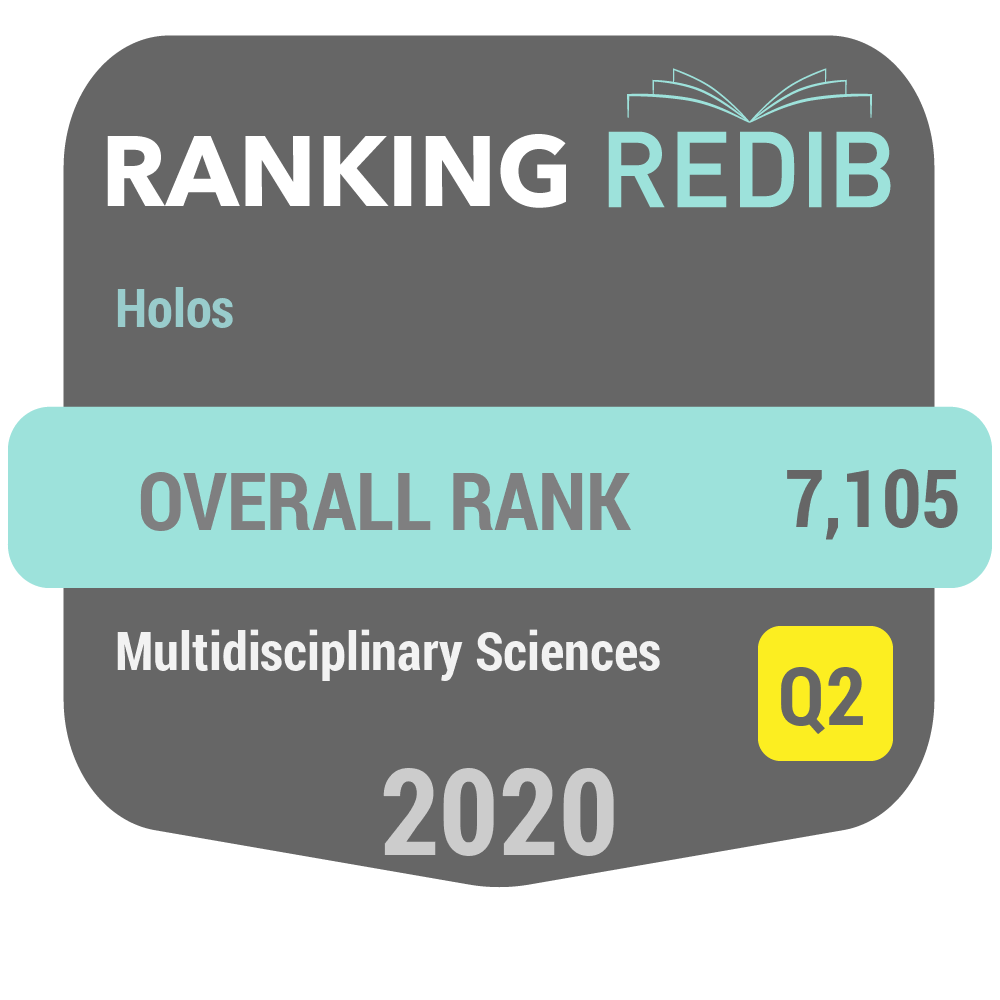EVALUATION OF VEGETABLE EXTRACTS FROM THE SEMI-ARID AS NATURAL pH INDICATOR
DOI:
https://doi.org/10.15628/holos.2015.1868Palavras-chave:
Ethanol extracts, natural indicator Acid-Base, Semi-Arid VegetablesResumo
Given the various difficulties to expose the contents of the subject of chemistry is a constant search for alternative materials to facilitate learning. This may partly be due to chemical science to be a significant practical character. However, due to professional educational institutions and material limitations ends up being passed on to the student of predominantly theoretical way, requiring a high degree of abstraction and consequently in their disinterest the same. In this context , we investigated the use of ethanol extracts of various plants, such as: Jitirana (Ipomoea glabra ), Íxora (Ixora coccínea), Centro (Centrosema brasilianum) and Candlebush (Senna alata) flowers, Beet (Beta vulgaris L.) fruit and Urucum (Bixa orellana) seeds as an acids and bases natural indicator, from laboratory tests capable of identifying properties demonstrate the pH. Initially we evaluated the variation in the coloration of extracts using for this buffer solutions at pH 3, 7 and 12. Among the cited vegetable flowers Jitirana, ixora and Centro presented activities relevant indicator as staining variants between pH 2:13. The extracts of plants were further added in glass tubes containing buffer solutions with a pH ranging from 2 to 13. The change in color of the extracts showed good activity has the same pH indicator.
Downloads
Referências
BACCAN, N.; ANDRADE, J. C.; GODINHO, O. E. S.; BARONE, J. S.; Química Analítica Quantitativa Elementar, 2a ed., Ed. Unicamp: Campinas, 1979, p. 46.
BISHOP, E. Indicators, 1a ed., Pergamon Press: Oxford, 1972.
BOYLE, R. Experiments upon Colors, vol. 2, London, 1663 apud Bishop, E., ed.; Indicators; Pergamon Press: Oxford, 1972a, p. 2.
BOYLE, R. Works, vol. 2; London, 1744, p. 53 apud Bishop, E., ed.; Indicators; Pergamon Press: Oxford, 1972b, p. 2.
BROWN, T. L. Química: A ciência central, 9ª ed., Rio de Janeiro: LTC, 2007.
COELHO, A. M. S. P.; SILVA, G. A. da; VIEIRA, O. M. C.; CHAVASCO, J. K.; Atividade antimicrobiana de Bixa orellana L. (Urucum). Revista Lecta, Bragança Paulista, v. 21, n. 1/2, p. 47-54, jan./dez. 2003.
CUCHINSKI, A. S.; CAETANO, J.; DRAGUNSKI, D. C.; Extração do corante da beterraba (beta vulgaris) para utilização como indicador ácido-base. Eclética Química, São Paulo, vol. 35, no. 4, pag. 17-23, 2010.
DUARTE, E. F.; RESENDE JÚNIOR, P.M.; CARNEIRO, I. F. Enraizamento de estacas de ixora (Ixora coccinea L.) com o usode AIB e solução mineral. In: CONGRESSO DE PESQUISA, ENSINO E EXTENSÃO DA UFG - CONPEEX, 3., 2006, Goiânia.Anais eletrônicos do III Seminário de Pesquisa e Pós-Graduação [CD-ROM], Goiânia: UFG, 2006. n.p.
DUCLOS, S. Mném Academic Royal Science Paris, (Depuis 1666, jusqu‘à 1699), 1731, 43 apud Bishop, E., ed.; Indicators; Pergamon Press: Oxford, 1972.
GIULLIETTI, A. M.; HARLEY, R. M.; QUEIROZ, L. P.; WANDERLEY, M. G. L.; DEN BERG, C. V. Biodiversidade e conservação das plantas no Brasil. Revista Megadiversidade, v. 1, n. 1, p. 52-61, 2005.
GUIM, A. I; FILHO, E. C. P.; SOUSA, M. F. de; SILVA, M. M. C.; Padrão de fermentação e composição químico-bromatológica de silagens de jitirana lisa (Ipomoea glabra Choisy) e jitirana peluda (Jacquemontia asarifolia L. B. Smith) frescas e emurchecidas. R. Bras. Zootec. vol. 33, no. 6, supl. 3, Viçosa, 2004.
IORDEN, E. A. Discourse of Natural Bathes and Mineral Waters, 2 ed., London, 1632 apud Bishop, E., ed.; Indicators; Pergamon Press: Oxford, 1972.
KIILL, L. H. P.; HAJI, F. N. P.; LIMA, P. C. F.; VISITANTES FLORAIS DE PLANTAS INVASORAS DE ÁREAS COM FRUTEIRAS IRRIGADAS. Scientia Agricola, v.57, n.3, p.575-580, jul./set. 2000
MAZZA, G.; MINIATI, E., Anthocyanins in fruits, vegetables, and grains. CRC Press, London, 1993, 362 p.
RODRIGUES, I.M.C.; SOUZA FILHO, A.P.S.; FERREIRA, F.A.; Estudo fitoquímico de Senna alata por duas metodologias. Planta daninha vol.27 no.3 Viçosa 2009
TERCI, D. B. R.; ROSSI, A. V. Indicadores Naturais de pH: usar papel ou solução? Química Nova. Vol. 25, n. 4, p. 684-688, 2002.
ROSS, E. Ullmann´s Encyclopedia of Industrial Chemistry; VCR: New York, 1989, p. 127.
TEIXEIRA, C. M.; QUEIROZ, M. E.; Livro de Resumos da 17ª Reunião Anual da SBQ, QA-86, 1994.









































